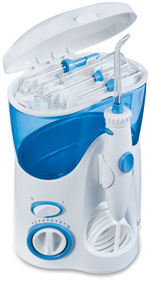Home › Forums › Periodontology › Toothbrush selection
Welcome Dear Guest
To create a new topic please register on the forums. For help contact : discussdentistry@hotmail.com
- This topic has 2 replies, 2 voices, and was last updated 29/01/2012 at 5:00 pm by
 drsushant.
drsushant.
-
AuthorPosts
-
12/11/2011 at 4:13 pm #10133
Anonymous
OnlineTopics: 0Replies: 1151Has thanked: 0 timesBeen thanked: 2 timesThe toothbrush is a fundamental tool used for accomplishing the goals of plaque control. It is the most common device used for maintaining good oral hygiene. From relying on nature for bristles to the era of manufactured nylon bristles and from the concept of a common brush for the whole family to stressing on more than one brush per individual, toothbrushes have gone major metamorphosis .
Today, the market is flooded with various brands of toothbrushes, some with more attractive packaging and the others with effective advertising, stating the size, shape, pliability, colour, and other physical features, each claiming superiority of it over the other. This makes it very difficult for the consumer to select a suitable toothbrush of specific clinical use. Thus, it is necessary to provide guidelines to both toothbrush manufacturers as well as the consumer. This helps to remind the manufacturers to produce quality products and consumers about the selection of a proper toothbrush for maintaining their dental hygiene, especially plaque control.
Toothbrushes vary in size, design, length, hardness, and arrangement of bristles. Today, toothbrush design has been studied, yet there is no convincing evidence to support the idea that which type is better than the other in terms of its efficacy in plaque removal.
“An ideal toothbrush may be defined as the one which removes plaque effectively”ADA has clearly stated their position and concluded that the method and toothbrush choice depends on patient oral health, manual dexterity, personal preference, the ability and their desire to learn and follow the prescribed procedures.
The specifications given by ADA are as follows:
Brushing surface = 1-1.25 inches long (25.4 35.8 mm)
5/16 – 3/8 inches wide (7.9-9.5mm)
2 – 4 rows of bristles
5 -12 tufts per row
80-86bristlespertuft
Diameter ofcommonly used bristles are:
Soft = 0.007 inch (0.2mm)
Medium = 0.012 inch (0.3mm)
Hard = 0.014 inch (0.4mm)
13/11/2011 at 12:10 pm #14819 drsushant
OfflineRegistered On: 14/05/2011Topics: 253Replies: 277Has thanked: 0 timesBeen thanked: 0 times
drsushant
OfflineRegistered On: 14/05/2011Topics: 253Replies: 277Has thanked: 0 timesBeen thanked: 0 timesThere are many factors to consider when selecting the proper toothbrush. The brush should be able to remove plaque from all tooth surfaces without damage to the tissue or tooth. The brush should fit properly in the hand. The brush should be soft nylon to prevent scratching the teeth or gums.
When brushing, apply medium pressure at a 45-degree angle. Too much pressure can bend bristles and damage your teeth and gums. A toothbrush should be soft enough to massage and stimulate the gums and clean the teeth.
Electric toothbrushes are great, especially for children, disabled adults, and anyone with braces. A water pick can also help with dental care. Keep in mind water picks do not replace toothbrushes or floss. They are designed to produce a direct pulsating stream of water to wash food particles from between teeth.
The following tips can make your toothbrush selection easier:
Your dentist or dental hygienist may suggest a particular brush that would be most effective for you.
Select products that display the American Dental Association’s Seal of Acceptance.
A toothbrush with soft bristles is less likely to injure gum tissue.
The size and shape of the brush should allow you to reach the surface of every tooth. Smaller brushes work better for smaller children.
Replace your toothbrush every 3 to 4 months. Worn or frayed brushes may injure the gum tissue.
Electric toothbrushes are just as good as manual brushes. People with handicaps and young children may find an electric toothbrush easier to use.29/01/2012 at 5:00 pm #15110 drsushant
OfflineRegistered On: 14/05/2011Topics: 253Replies: 277Has thanked: 0 timesBeen thanked: 0 times
drsushant
OfflineRegistered On: 14/05/2011Topics: 253Replies: 277Has thanked: 0 timesBeen thanked: 0 timesWaterPik

 Many of our patients do not floss. They don’t like to floss. They don’t want to floss. They find the process too difficult, too messy. Excuses abound while compliance is low. Numerous studies attest to the importance and benefits of at-home interproximal cleansing. How to bridge the gap? Water Pik’s Ultra Water Flosser (WP-100) is an easier alternative to string flossing, and it is clinically proven to remove plaque biofilm, reduce inflammation, and decrease gingival bleeding. Compare the effectiveness of manual brushing with the chairside dental water spray! Water flossing has been available for several decades, but it is only recently that its significant advantages have been clinically reviewed. Laboratory tests indicate that 99.9% of plaque can be removed with a single 3-second application. The primary indications for water flossing include the areas that are the most challenging for string floss: implants, crowns, bridges (subpontic), orthodontic brackets and wires, and of course, patients with periodontal pockets. Debris is washed away rather than jammed into existing pockets. Water flossing massages the gums and enhances circulation; it is clinically documented to improve gingival health twice as effectively as string flossing. It also removes bacteria from deep between the teeth and below the gingival crest where bushing and flossing cannot reach. The WP-100 is smaller and quieter than previous models, with 10 distinct pressure settings ranging from 5 psi to 90 psi, and 6 unique tips designated for specific oral conditions. Water, mouthwash, and similar liquids can be used. The 90-second reservoir capacity is adequate to effectively water floss the entire dentition. The Waterpik Ultra Water Flosser (WP-100) is easy and pleasant to use, increases patient home-compliance, and leaves the mouth feeling fresh and clean.
Many of our patients do not floss. They don’t like to floss. They don’t want to floss. They find the process too difficult, too messy. Excuses abound while compliance is low. Numerous studies attest to the importance and benefits of at-home interproximal cleansing. How to bridge the gap? Water Pik’s Ultra Water Flosser (WP-100) is an easier alternative to string flossing, and it is clinically proven to remove plaque biofilm, reduce inflammation, and decrease gingival bleeding. Compare the effectiveness of manual brushing with the chairside dental water spray! Water flossing has been available for several decades, but it is only recently that its significant advantages have been clinically reviewed. Laboratory tests indicate that 99.9% of plaque can be removed with a single 3-second application. The primary indications for water flossing include the areas that are the most challenging for string floss: implants, crowns, bridges (subpontic), orthodontic brackets and wires, and of course, patients with periodontal pockets. Debris is washed away rather than jammed into existing pockets. Water flossing massages the gums and enhances circulation; it is clinically documented to improve gingival health twice as effectively as string flossing. It also removes bacteria from deep between the teeth and below the gingival crest where bushing and flossing cannot reach. The WP-100 is smaller and quieter than previous models, with 10 distinct pressure settings ranging from 5 psi to 90 psi, and 6 unique tips designated for specific oral conditions. Water, mouthwash, and similar liquids can be used. The 90-second reservoir capacity is adequate to effectively water floss the entire dentition. The Waterpik Ultra Water Flosser (WP-100) is easy and pleasant to use, increases patient home-compliance, and leaves the mouth feeling fresh and clean. -
AuthorPosts
- You must be logged in to reply to this topic.